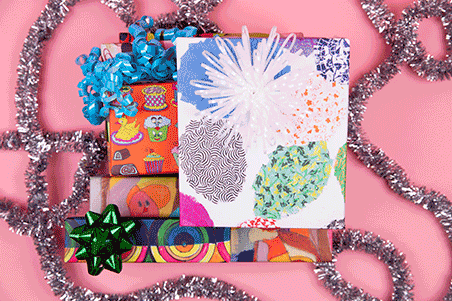The Seed of an Idea Grows Into a Bouquet of Stamps : Artists: In an unprecedented move, the U.S. Postal Service commissioned 50 designs by a new artist. The bright flowers went on sale in July.
- Share via
WASHINGTON — Karen Mallary of Anacortes, Wash., had been painting professionally for two years when she dashed off a letter to the Postal Service, suggesting she should design some stamps.
“I just wanted to be considered as an artist,” said Mallary, who had collected stamps as a child. Mallary did not tell the Citizens’ Stamp Advisory Committee what she wanted to paint, but her specialty left them little choice. “I do flowers; that’s all I do.”
Six years after Mallary’s brash proposal arrived at postal headquarters, she made her debut as a stamp artist.
Fifty stamps, each bearing Mallary’s watercolor image of a native American wildflower, went on sale July 24 in Columbus, Ohio.
They are the latest in a series of stamp sheets that have carried 50 images, including state flags, state flowers and birds and wildlife. All have been among the most popular stamps that the Postal Service has issued.
Postal officials are expecting that Mallary’s wildflower stamps, issued at the American First Day Cover Society’s national convention, will continue that tradition.
The service has been so taken by her paintings that it reproduced them in a 64-page album featuring photographs and details about each flower.
It wasn’t until 1989, three years after Mallary had offered her services, that the Postal Service accepted her idea. Initially, its plans called for a block of four garden flowers, Mallary recalled in an interview.
Postal officials let Mallary pick the flowers, and she decided to go by region. Fragrant waterlily represented the South, Jacob’s ladder the North, California poppy the West and large-flowered trillium the East.
When members of the stamp committee reviewed her work, they became “very enthusiastic,” Mallary said. They decided to expand the project to 50 stamps, an unprecedented honor for a first-time stamp artist.
The assignment came with a caveat that made Mallary uncomfortable. She could not tell anyone about her project.
That made life somewhat difficult at the Lady Bird Johnson National Wildflower Research Center in Austin, Tex., where she was doing research, Mallary said. “They assumed I was working on a book, and I didn’t tell them otherwise.”
Her designs were completed last year, but uncertainty over the first-class postage rate led postal officials to delay the issue.
Unlike the previous sheets with 50 designs, her wildflowers were printed by a private printer in a process that could produce several varieties.
Ashton-Potter America Inc., a newly formed U.S. subsidiary of an Ontario firm that prints 80% of Canada’s stamps, produced the stamps at its Amherst, N.Y., plant.
The contract fulfills the hope postal executives expressed last year in the midst of a controversy over the printing of two U.S. stamps in Canada.
After Congress threatened to outlaw the practice, postal officials said they believed they could get a Canadian company to move south and print stamps in the United States.
Ashton-Potter America printed the stamps simultaneously on two offset presses, one of which produced four sheets of stamps and the other six sheets at a time.
Stamps printed on the four-sheet press carry odd plate numbers, and those from the six-sheet press carry even numbers.
To help collectors who collect sheets and plate number blocks, a diagram is printed on the sheet margins to show where the sheet was printed on each press, another first.
The use of two presses created the possibility of printing variations, and the different plate numbers and the diagram tell which press may have produced any variety.
The wildflowers on Mallary’s stamps literally tumble off their black backgrounds onto the stamps’ white borders. The designs are as colorful as the name of each species: showy evening primrose, claret cup cactus, Turk’s cap lily, yellow skunk cabbage, Dutchman’s breeches, smooth Solomon’s seal.
More to Read
The biggest entertainment stories
Get our big stories about Hollywood, film, television, music, arts, culture and more right in your inbox as soon as they publish.
You may occasionally receive promotional content from the Los Angeles Times.










